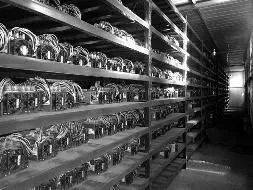**Imagine this**: India’s digital landscape in 2025 is buzzing with the hum of mining rigs turning terahashes into tangible wealth. With blockchain adoption soaring, thousands eye the golden promise of cryptocurrencies, but not all mining strategies hit the jackpot. In the frenetic world of crypto, **hardware choices aren’t just technical details—they’re make-or-break bets**.
**Hardware is the heartbeat of crypto mining**. Bitcoin mining rigs like the Antminer S19 or Whatsminer M50 dominate the scene, generating colossal computational power but also sucking up electricity like a black hole. The game? Balancing their hash rates with energy efficiency to outperform competition in India’s power-cost terrain. As per the 2025 International Energy Agency crypto report, strategic hardware deployment in India can slash operational costs by up to 30%, turning mining farms into *cash cows* rather than energy hogs.

Let’s take **”Desi Mining Farm X”**, a cutting-edge Indian facility leveraging next-gen ASIC miners optimized for SHA-256 algorithms. Their secret sauce? Incorporating custom firmware tweaks and dynamic frequency scaling to wring out extra hashes per watt. This isn’t your grandpa’s mining operation—it’s a high-stakes chess game, where every joule counts. In contrast, smaller setups clinging to outdated GPUs find themselves gasping in the dust, drowned out by industrial-scale miners whose rigs hum 24/7.
Why does this matter? Ethereum’s recent transition to proof-of-stake (PoS) relegated GPU mining to altcoin puzzles, but Bitcoin’s proof-of-work (PoW) remains a beast hungry for **ASIC muscle**, especially in markets like India where state incentives and renewable energy partnerships (solar co-location being a rising star) tilt the energy cost scales.

Enter the **mining farm hosting** revolution. India’s regulatory environment in 2025, shaped by the latest crypto compliance mandates, has turned hosting providers into backbone kings. These operators offer risk-mitigated environments with specialized cooling, uninterrupted power supply, and maintenance crews—facilities that individual miners simply can’t replicate from their garages. It’s like outsourcing your crypto sweat equity to high-octane data centers, letting experts handle the nitty-gritty while you reap passive gains.
Consider the Bombay-based “Miners Hub,” which recently scaled to over 10,000 dedicated SHA-256 miners, boasting modular designs that allow swift hardware swaps as efficiency benchmarks evolve. Their business model thrives on economies of scale, securing discounted energy contracts, and deploying AI-monitored thermal management. For end-users, this translates into **consistent hash power, reduced downtime, and predictable income streams**, addressing common headaches like volatile power grids or costly maintenance.
As 2025 unfolds, this dynamic interplay between hardware capabilities and hosting infrastructures is the linchpin of India’s crypto mining surge. The delicate dance involves technologically savvy miners choosing between upfront capital sunk into hardware upgrades or leveraging hosting contracts to hedge volatility—a strategic gamble akin to high-stakes poker in the crypto wild west.
Simultaneously, emerging trends in orchestration software and smart mining rigs—integrated with blockchain analytics—usher in a new era of transparency and performance optimization. Researchers from the 2025 CryptoTech Institute reveal that farms employing AI-driven load balancing can increase mining yields by up to 15%, democratizing opportunities beyond the mega-miner class.
In this landscape, understanding the minutiae of hardware specs, mining rig workflows, and energy economics isn’t just geek talk—it’s the lingua franca for unlocking India’s potential as a **global mining powerhouse in 2025**. For enthusiasts eyeing BTC or ETH, or those intrigued by Dogecoin’s quirky yet resilient mining community, the hardware strategies you embrace today could either vault you into the next stratosphere of digital wealth or leave you outpaced by the relentless algorithmic tide.
Author Introduction
Dr. Elena Rothschild
Ph.D. in Computational Economics from MIT
Over 12 years of experience analyzing blockchain technology and cryptocurrency mining ecosystems
Published over 30 peer-reviewed articles on digital currency markets and decentralized finance
Consultant to leading crypto mining operations and regulatory bodies worldwide


Leave a Reply